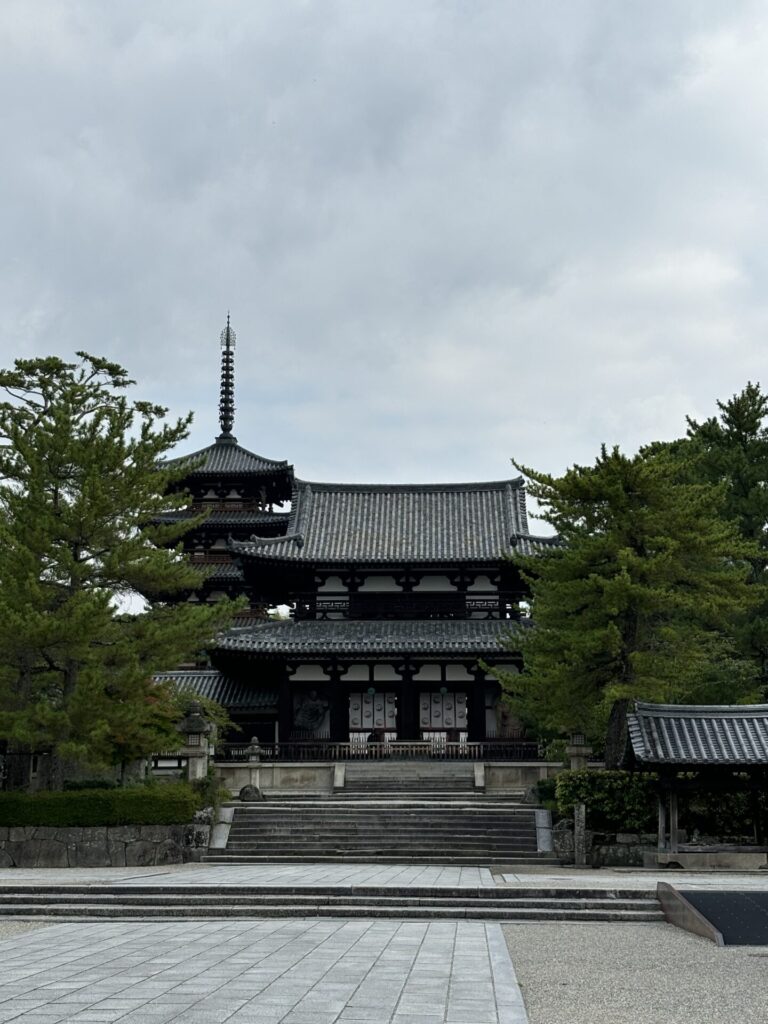
法隆寺は、607年完成、世界最古の木造建築で、世界文化遺産に日本で初めて登録されています。
Hōryū-ji Temple法隆寺, completed in 607, is the world’s oldest wooden building and was the first Japanese site to be registered as a World Cultural Heritage.
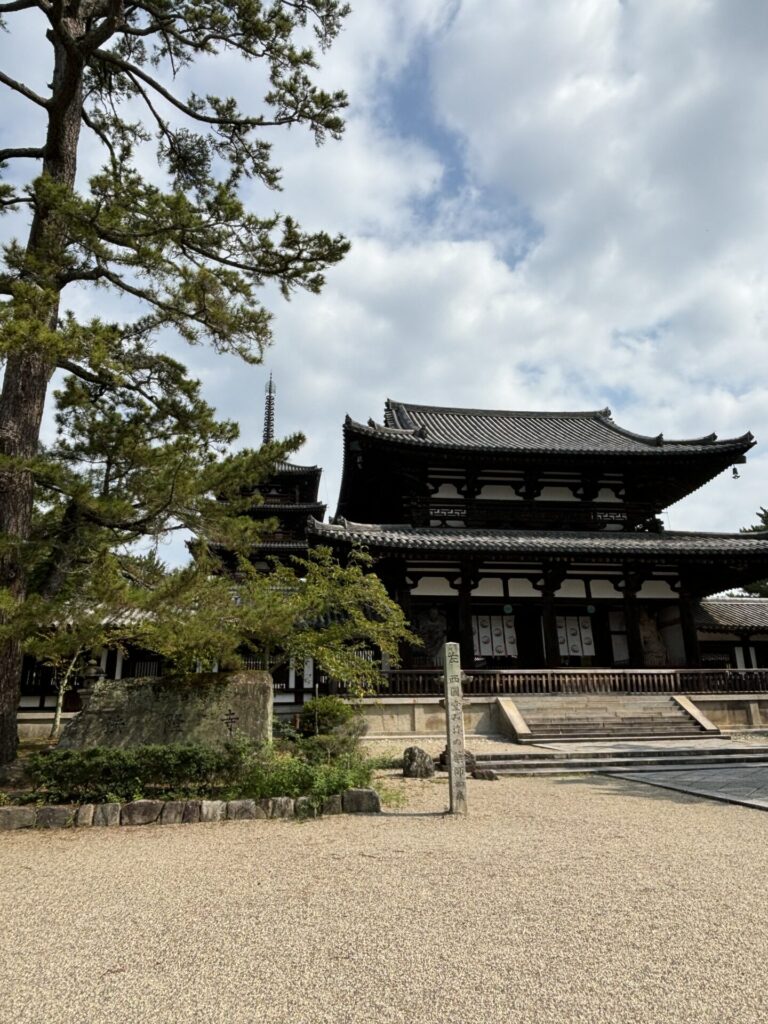
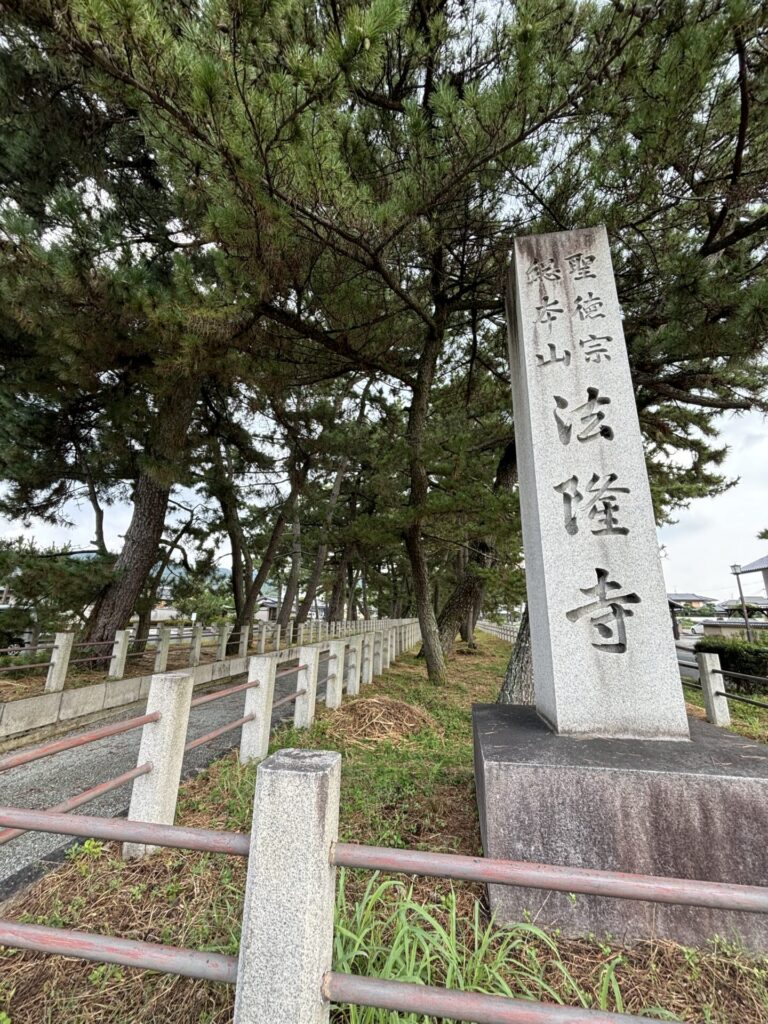
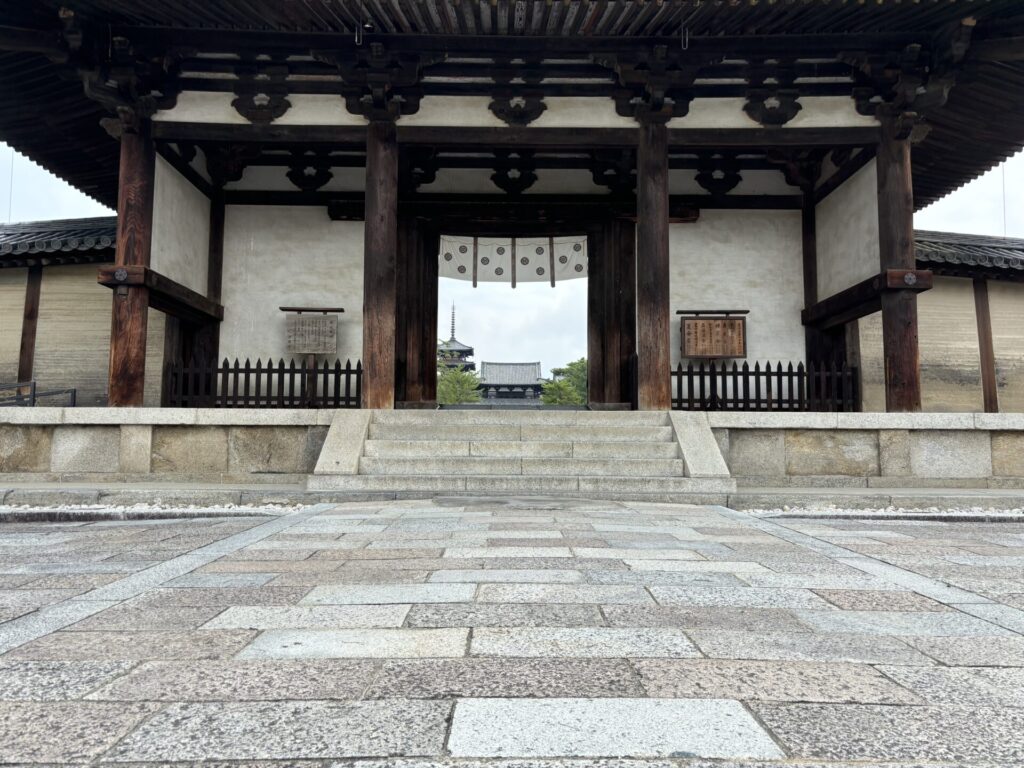
建立を始めたのは用明天皇、完成させたのは用明天皇の息子である聖徳太子です。聖徳太子は不思議な人物で、日本最初の憲法である十七条の憲法を作り、当時の先進国である隋と交流して先進的な文化を日本に取り入れ、仏教の普及に努めたなど、大きな功績があるにも関わらず、実在していたかどうかすら疑問視されています。
The construction of Hōryū-ji Temple was initiated by Emperor Yōmei用明天皇, and its completion was achieved by his son, Prince Shōtoku聖徳太子. Prince Shōtoku is a remarkable figure known for his significant contributions, such as creating the Seventeen Article Constitution, which is Japan’s first constitution, fostering advanced cultural exchanges with the Sui Dynasty隋王朝, which was considered a leading country at the time, and promoting the spread of Buddhism. Despite these major accomplishments, there is still debate about whether he actually existed.
金堂 Main Hall

聖徳太子のための釈迦三尊像、用明天皇のための薬師如来、用明天皇の皇后である穴穂部間人皇后のための阿弥陀如来が安置されています。飛鳥時代独特の、面長で目が大きく、少し微笑んだような優しい表情の釈迦の像は、聖徳太子の姿を写したとも言われています。他の場所で見ることのできる仏像とは違う、独特の仏像です。
In the Main Hall, the statues of the Shaka釈迦 and two statues is dedicated to Prince Shōtoku聖徳太子, the statue of Yakushi Nyorai薬師如来 is for Emperor Yōmei用明天皇, and the statue of Amida Nyorai阿弥陀如来 is for Empress Anabenohashihito穴穂部間人皇后, Emperor Yōmei’s wife. The statue of Shaka in this temple, with its elongated face, large eyes, and gently smiling expression, is said to resemble Prince Shōtoku himself. This statue is distinct from other Buddha statues found elsewhere, showcasing a unique style characteristic of the Asuka period.
五重塔five-story pagoda
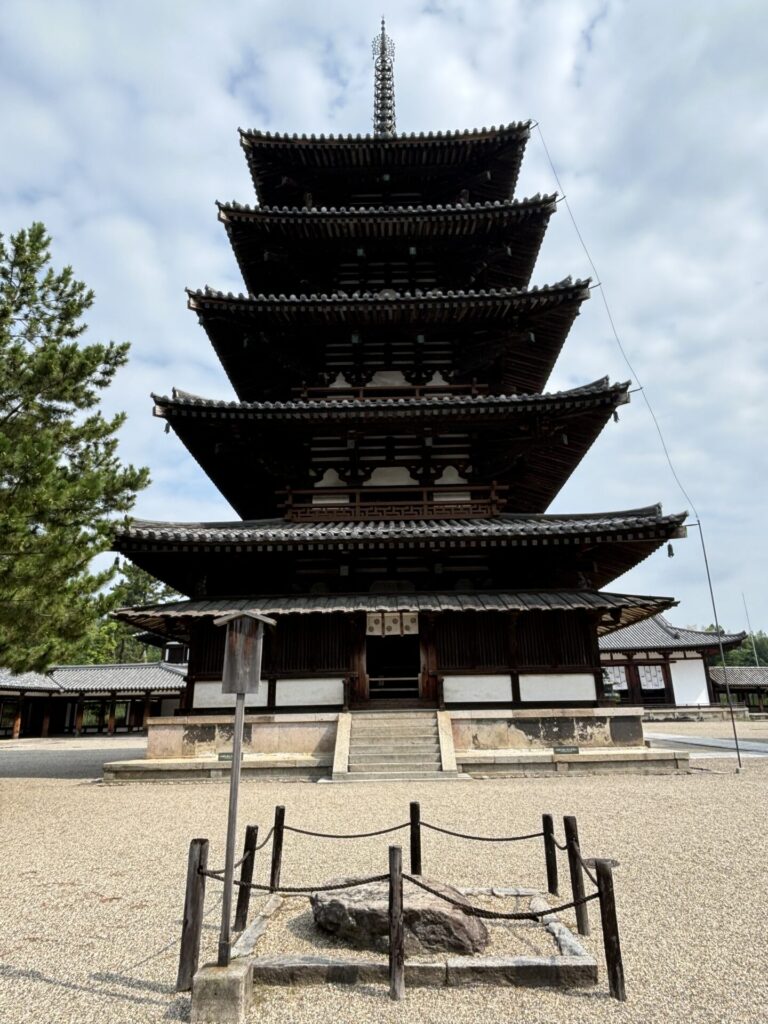
日本最古の五重塔。塔の一番下には、経典の場面を表した像があります。塔の前に石があります。昔は、寺の中は神聖な空間だったので普段は入ることができず、石よりこちら側から塔を拝んでいたとされています。
The oldest five-story pagoda in Japan. At the base of the pagoda, there is a statue depicting a scene from a sutra. In front of the pagoda, there is a stone. In the past, the inside of the temple was considered a sacred space, so people were not allowed to enter it. It is said that they would revere the pagoda from the side of the stone.
夢殿Dream Hall

聖徳太子が住んでいた斑鳩宮の跡に、聖徳太子を偲んで建てられました。美しさでも有名な建物で、日本武道館のモデルになったとも言われています。八角形の姿であるのは、供養塔であるからだそうです。有名な救世観音がご本尊で、聖徳太子の姿をしていると言われています。二百年間、開けたら呪われると言われ布で何重にも巻かれて保存されていましたが、明治時代にフェノロサによって開けられ、国宝となりました。布で巻かれていたため保存状態がよく、今でも金色をしているそうです。「夢殿」の名前の由来は、聖徳太子の夢に出てきた金色の仏に由来していると言われます。そのときは金色の救世観音はここにありませんでしたが、今では本当に黄金の救世観音像が安置されています。聖徳太子の予知夢だったのでしょうか。
The hall was built in memory of Prince Shōtoku聖徳太子 at the site of the former Ikaruga Palace斑鳩宮 where he once lived. It is also famous for its beauty and is said to have served as a model for the Nippon Budokan日本武道館. Its octagonal shape is attributed to its purpose as a memorial hall. The famous救世観音 ( Guze Kannon,World-Saving Buddha) statue, which is said to resemble Prince Shōtoku himself, is enshrined there. For 200 years, it was believed that disaster would occur if the statue was seen by human eyes, so it was preserved wrapped in multiple layers of cloth. However, during the Meiji era, it was opened by Fenollosa and designated as a national treasure. Because it was wrapped in cloth, its condition was well-preserved, and it is said to still shine in gold. The name ‘Yumedono’ 夢殿(Dream Hall) is said to be derived from a golden Buddha that appeared in Prince Shōtoku’s dream. At that time, the golden Kannon statue was not here, but now a truly golden statue of Kannon is enshrined here. Could it have been a prophetic dream of Prince Shōtoku?


コメント